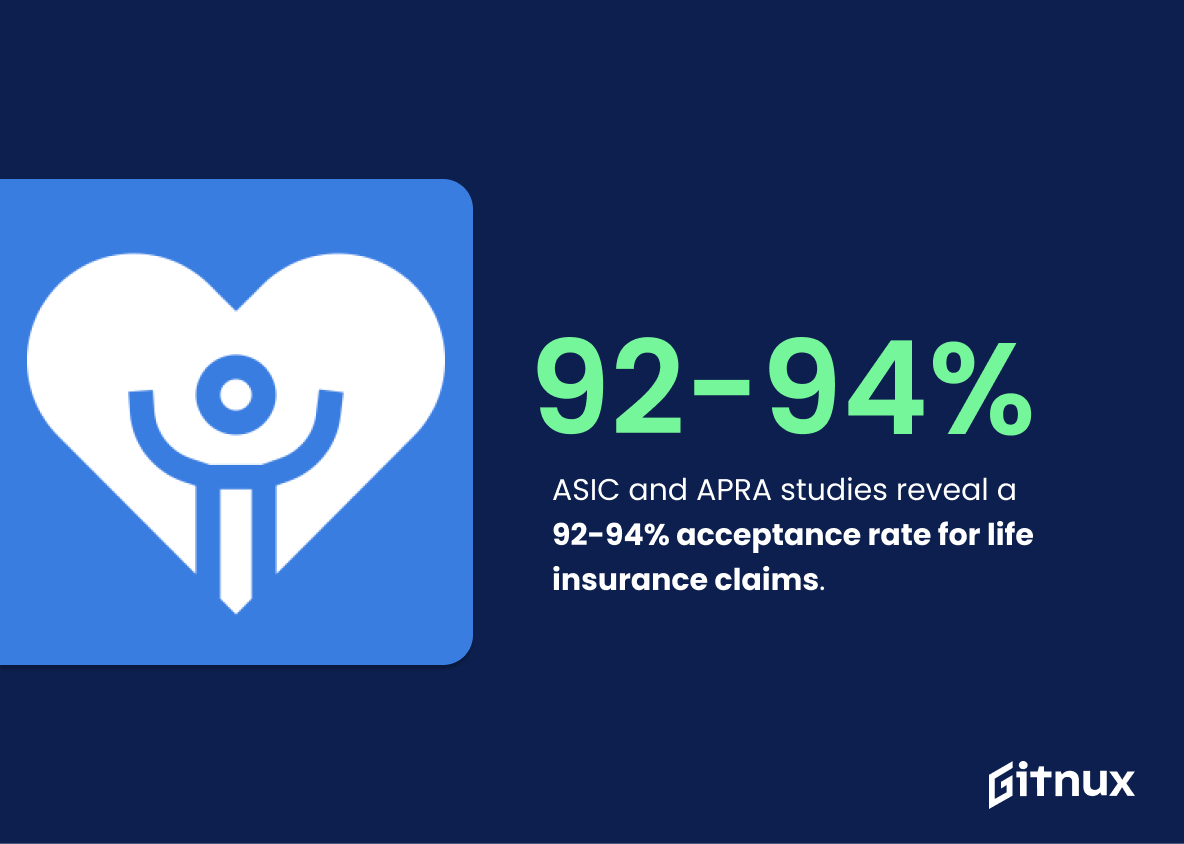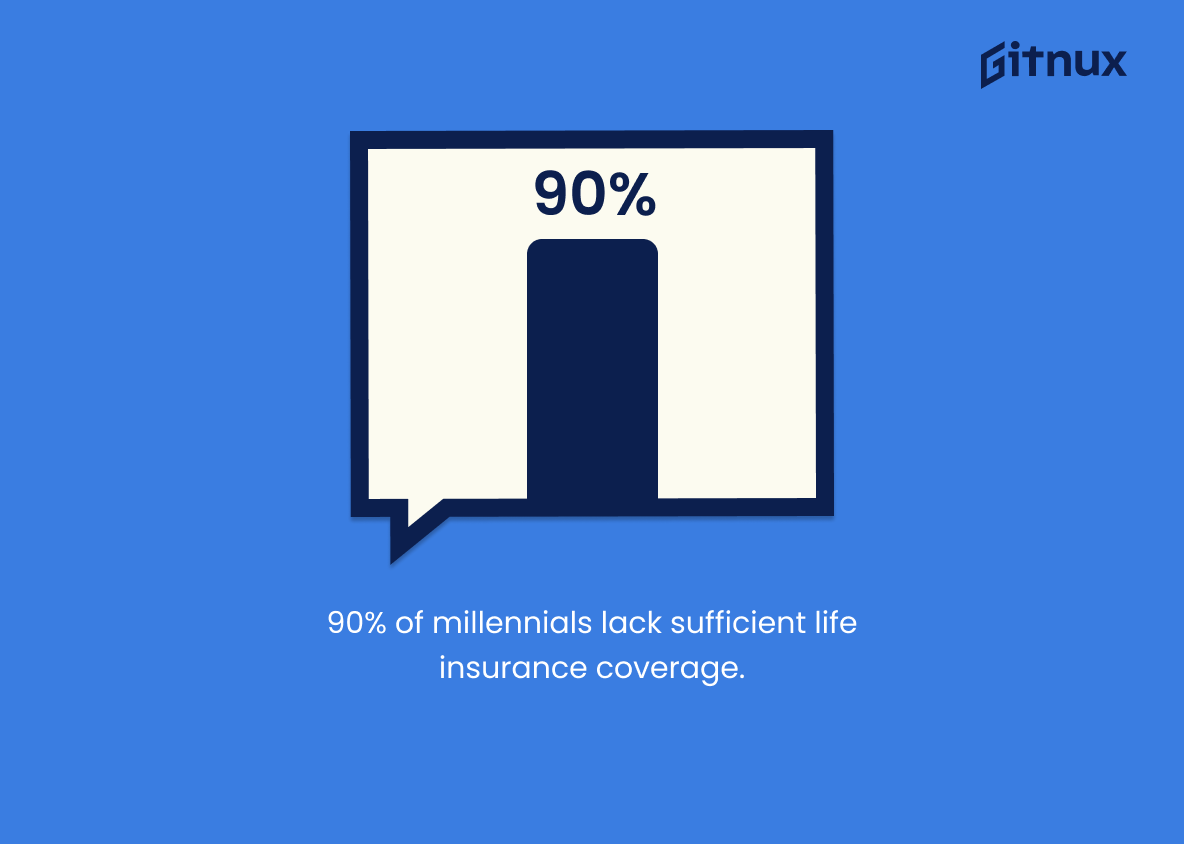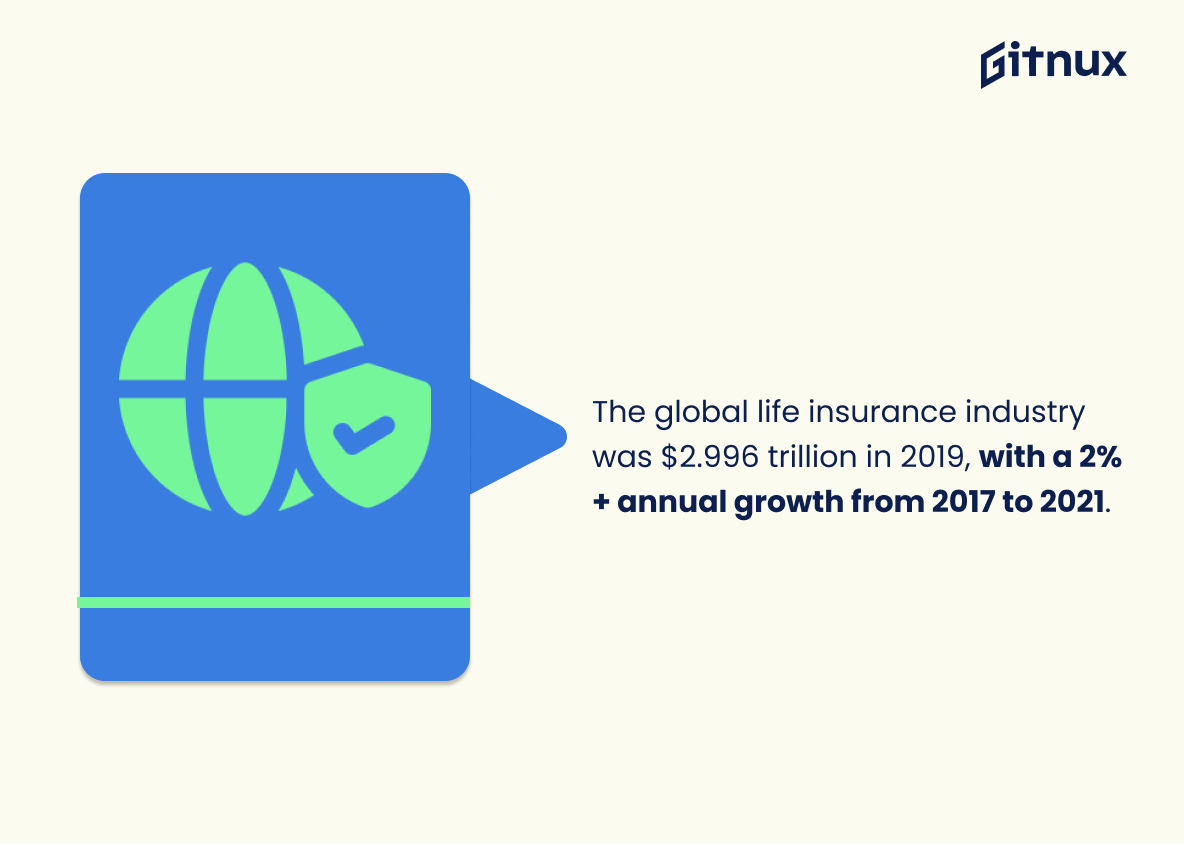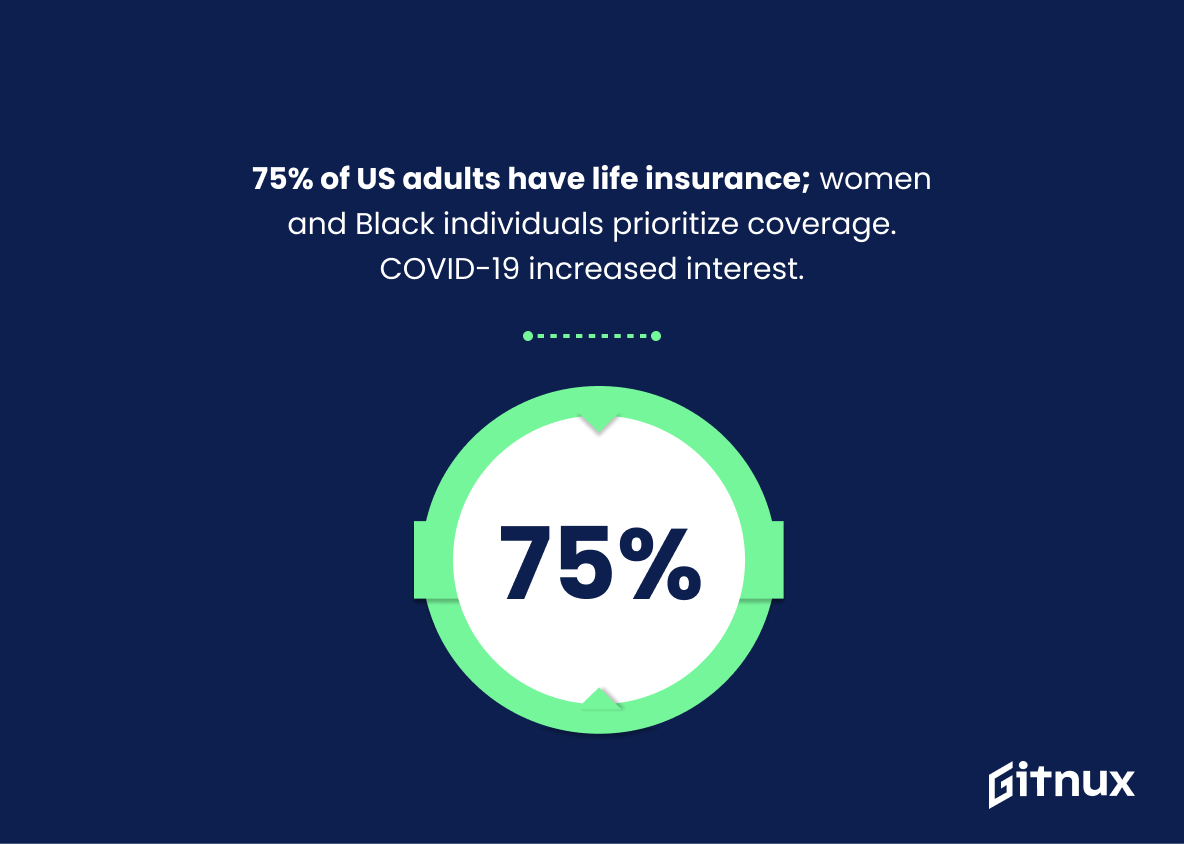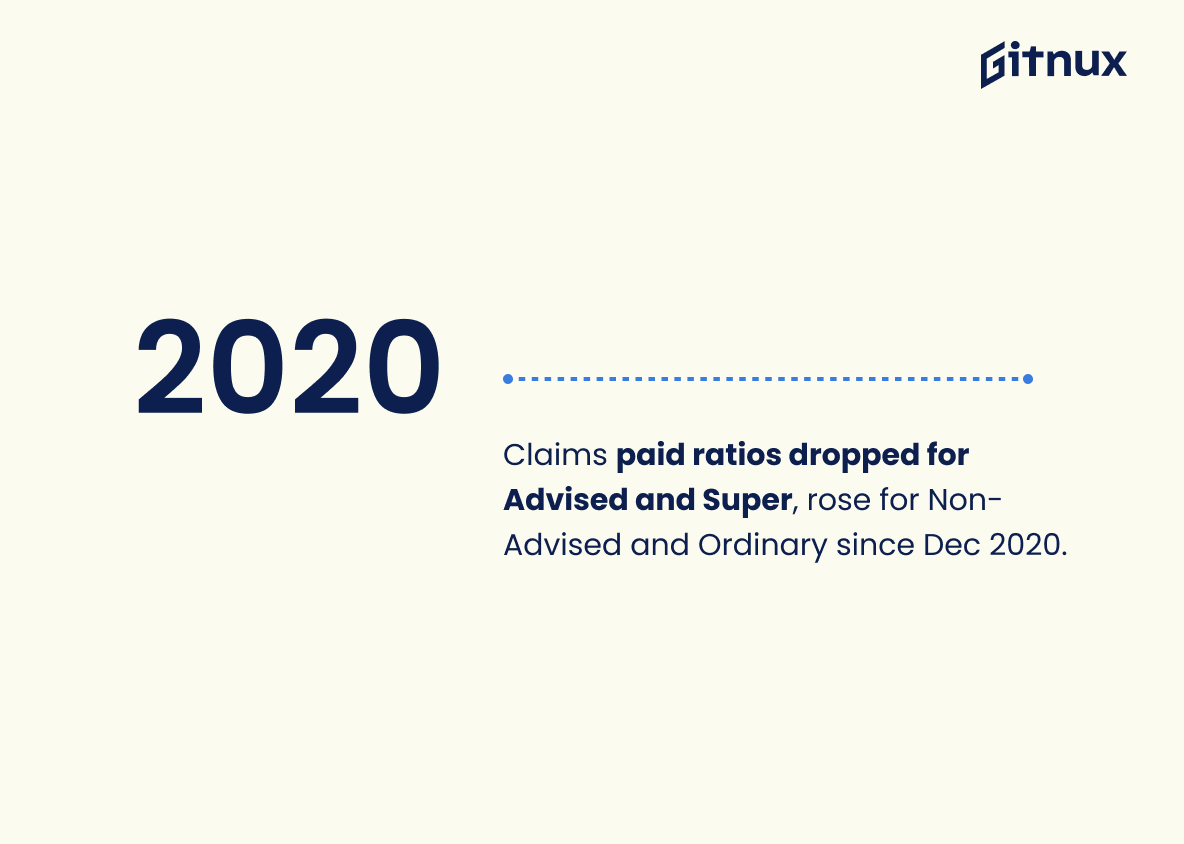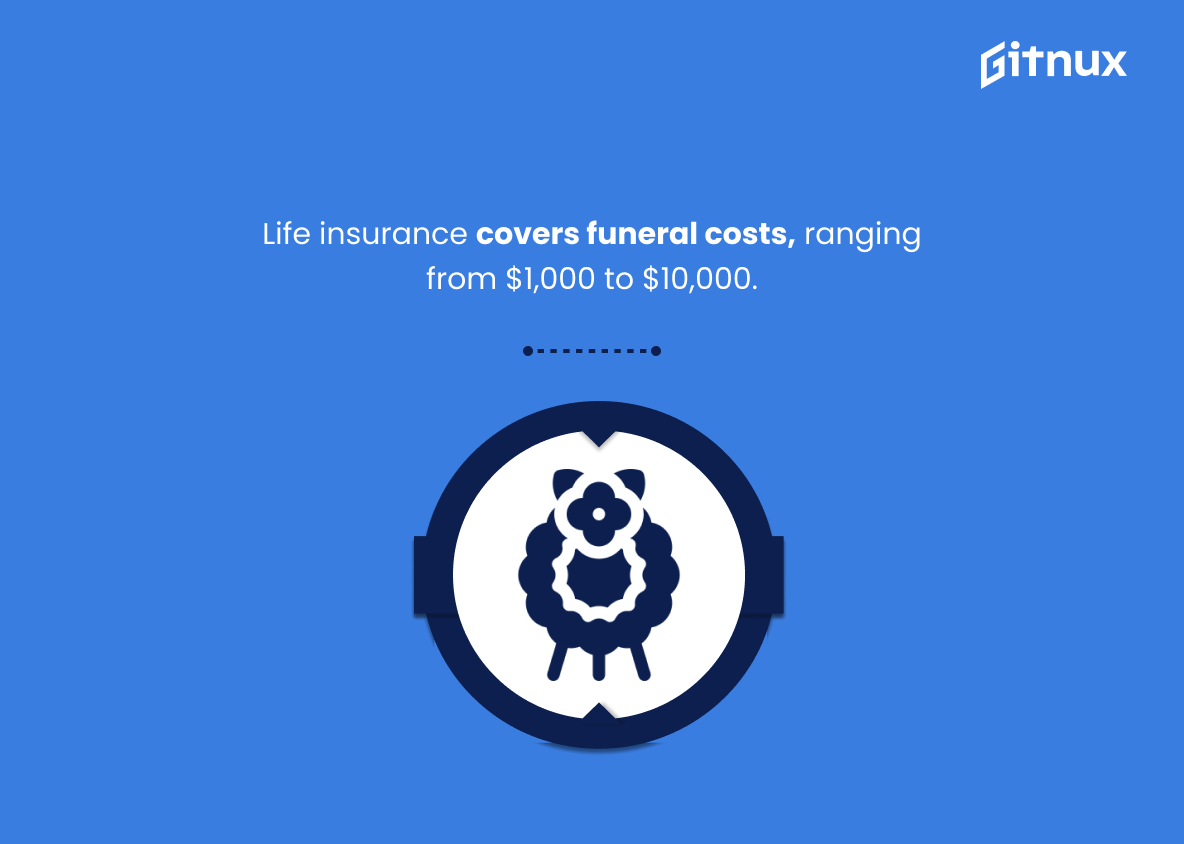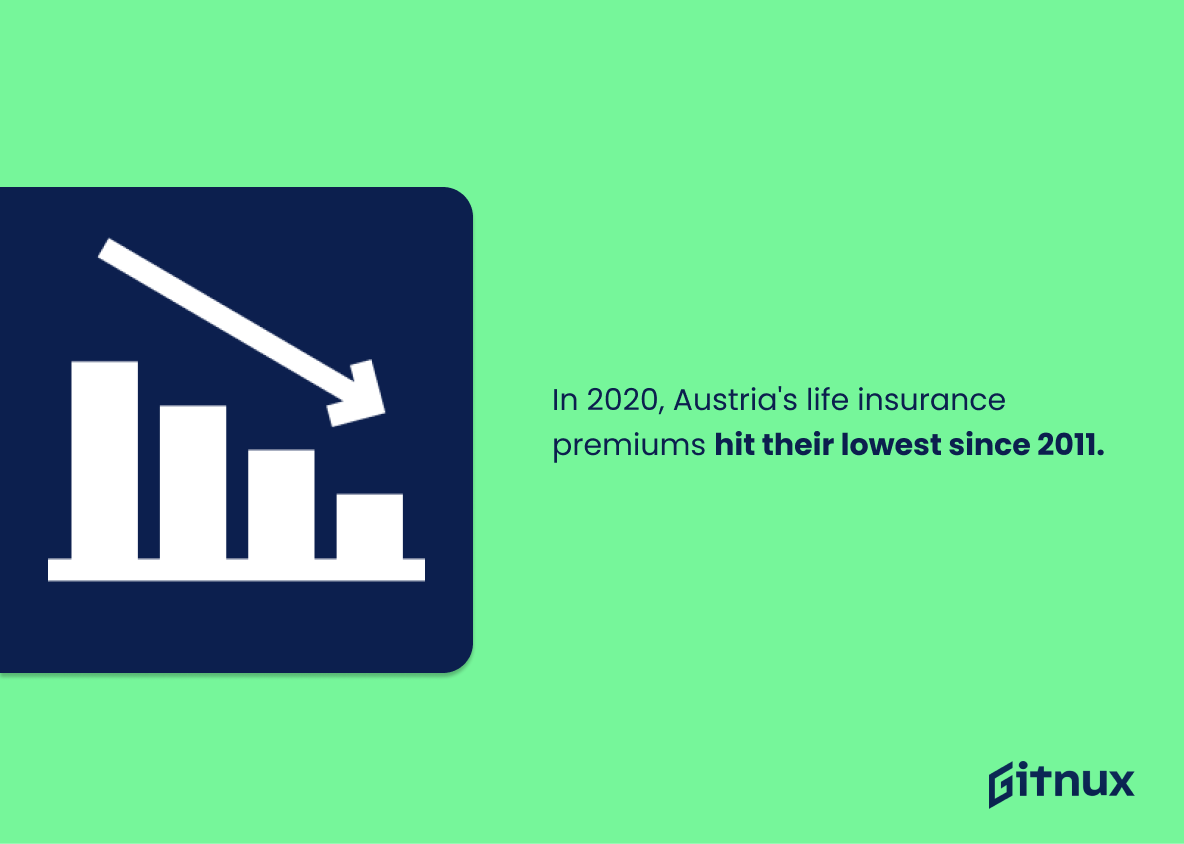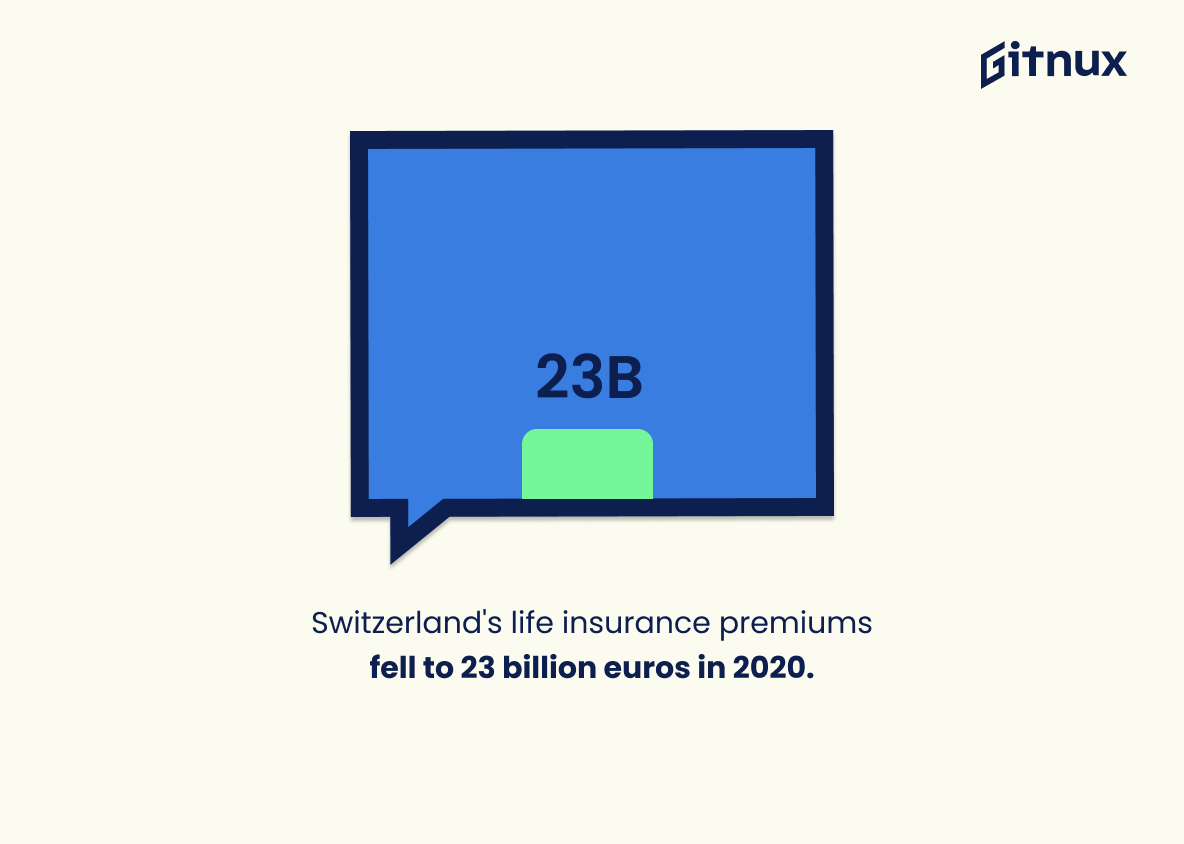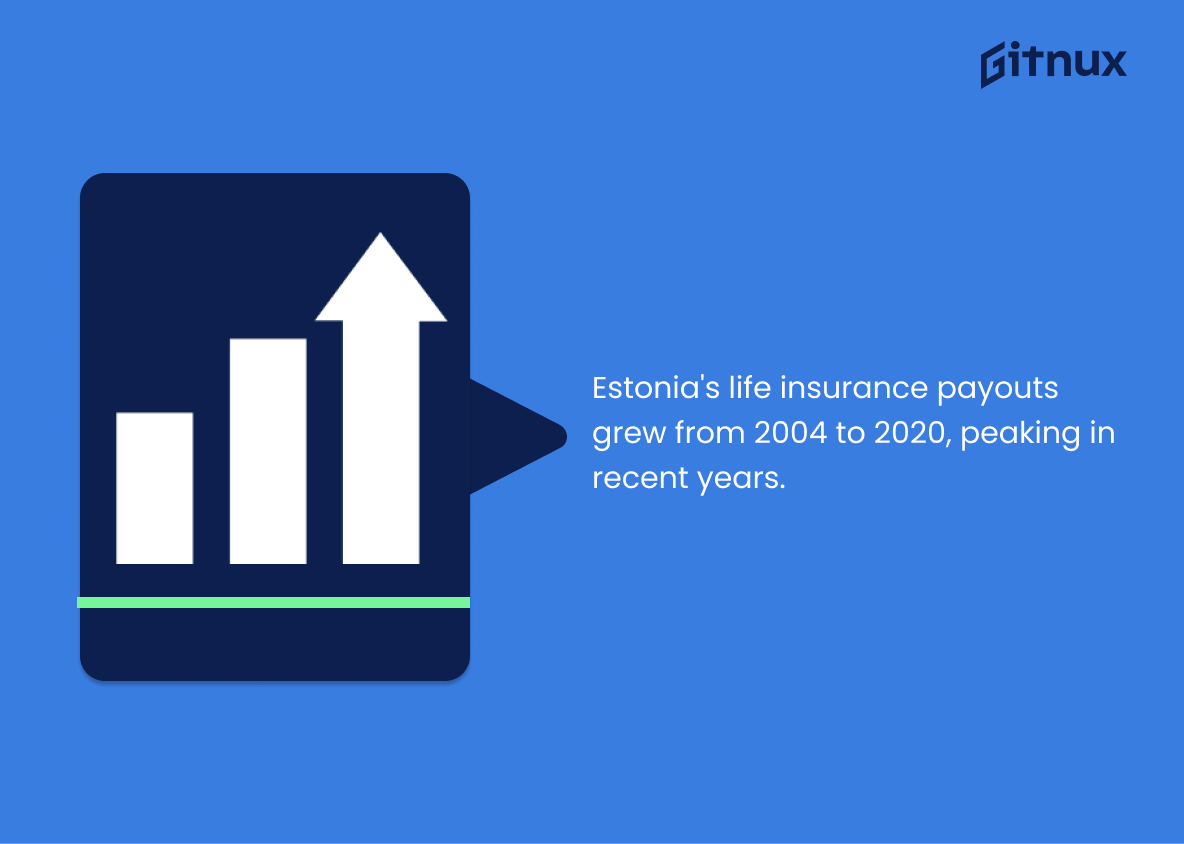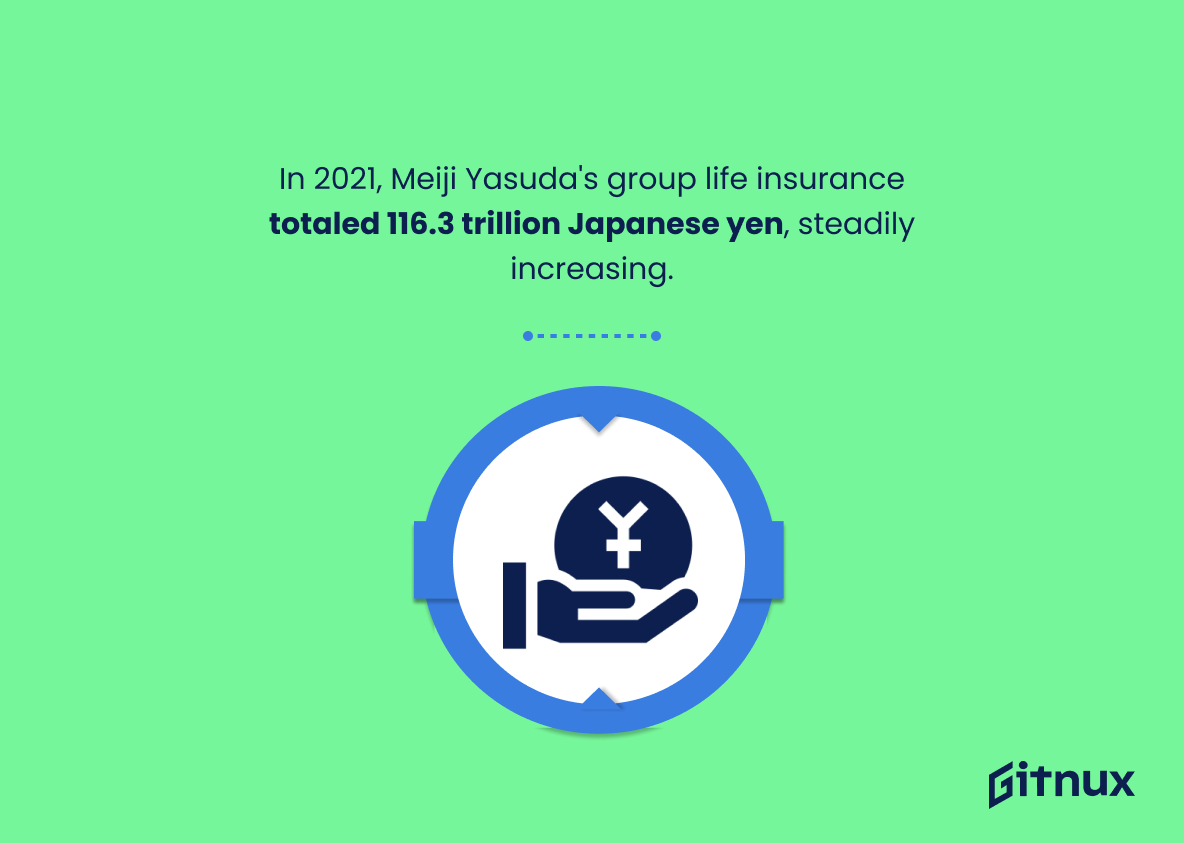Life insurance is an important part of financial planning, but many people don’t understand the full scope of how life insurance works.
In this article, we’ll take a look at some of the most interesting life insurance statistics to help you better understand the industry and how it can help you protect your loved ones. We’ll also discuss the importance of life insurance and why it’s important to have a policy in place. By the end of this post, you’ll have a better understanding of life insurance and how it can help you and your family.
Life Insurance: Most Important Statistics
The global life insurance industry market size was valued at $2996 billion in 2019 and is expected to grow at a CAGR of more than 2% during 2017-2021.
Only 10% of millennials have the life insurance coverage they need, and 44% are not financially ready to deal with the death of the family breadwinner.
Life Insurance: Statistics Overview
The market size of the Life Insurance & Annuities industry in the US is expected to reach $1.1t in 2023, with a growth rate of 3.2%, and an annualized growth rate of 2.5% from 2018-2023.
The Life Insurance & Annuities industry is growing, albeit at a slower rate than the Finance and Insurance sector overall. This data can be used to inform decisions on investments and strategies in the Life Insurance & Annuities industry.
The global life insurance industry market size was valued at $2996 billion in 2019 and is expected to grow at a CAGR of more than 2% during 2017-2021.
Gender-based premium pricing has been abolished in the UK and EU, giving choices to transgenders, while India and Portugal have issued guidelines and laws to include transgender people in insurance policies.
Whole life has the maximum share in the global life insurance market.
At least three in four American adults have some form of life insurance, with women twice as likely as men to lack it. Black individuals are more likely to cite covering burial costs and final expenses as their main reason for buying life insurance than the overall population. The Covid-19 pandemic has made American consumers consider life insurance more seriously, with 30% of respondents indicating they are more likely to buy life insurance.
There is a need for life insurance, particularly among women and Black individuals, and that the Covid-19 pandemic has increased awareness of the value of life insurance.
The International Monetary Fund has lowered its global growth forecast for 2022 and 2023, resulting in a 21% dip in capitalization of the 15 largest life insurers worldwide. This underperformance of global markets has caused life insurers to modernize their operational systems and accelerate digital transformation initiatives to satisfy customer needs and capitalize on demand driven by COVID-19 and low interest rates.
This highlights the need for life insurers to remain agile and responsive to the changing macroeconomic environment in order to remain competitive and profitable.
By modernizing their systems and accelerating digital transformation initiatives, life insurers can better meet customer needs and capitalize on the demand driven by the current economic climate.
Only 10% of millennials have the life insurance coverage they need, and 44% are not financially ready to deal with the death of the family breadwinner.
Many millennials are not adequately prepared for the unexpected death of a family member. Without life insurance, the surviving family members may not be able to afford mortgage payments or other expenses.
This highlights the importance of having life insurance coverage to ensure financial security in the event of a tragedy.
Only 20% of millennials are likely to buy life insurance, and 80% have bigger financial priorities than insurance.
Millennials are not prioritizing life insurance, leading to a decrease in life insurance purchases.
The claims paid ratios for Individual Advised and Group Super businesses have decreased since December 2020, while the ratios for Individual Non-Advised and Group Ordinary business have increased. The variance in claims paid ratio between products ranges from 20-172%.
This provides insight into the claims paid out by the company in comparison to the premiums received. This information can be used to assess the financial stability of the company and the effectiveness of their risk management strategies.
A studies done by ASIC and APRA show that over 90% of all life insurance claims are being paid, with an average claims accepted rate of 92-94%.
This should give confidence to buyers of insurance policies that help will be there when they need it the most. This provides assurance to consumers that their insurance policies will be honored and that they will receive the financial help they need in the event of an emergency.
The top 10 life insurance providers account for 46% of the market share and premiums written have increased by 9% from 2020 to 2022.
This shows the current state of the life insurance industry. It indicates that the industry is growing and that the top 10 providers are responsible for a large portion of the market share.
This information is useful for people who are looking to purchase life insurance and want to know which providers are the most popular and reliable.
Life insurance can help cover the cost of funeral expenses, which can range from $1,000 to $10,000.
This provides a financial safety net for loved ones in the event of death, and can help alleviate the stress of worrying about how to pay for funeral expenses.
In 2020, the value of gross written premiums by life insurance companies in Austria reached its lowest value since 2011.
The value of life insurance premiums is decreasing every year, which could indicate a decrease in demand for life insurance products.
This could be due to a variety of factors, such as changes in consumer preferences, economic conditions, or changes in regulations. Understanding this trend is important for insurance companies to adjust their strategies and ensure they remain competitive in the market.
The value of life insurance premiums in Switzerland increased from 2015 to 2020, reaching a peak of 30 billion euros in 2015, before declining to 23 billion euros in 2020.
This provides insight into the overall health of the life insurance industry in Switzerland. It shows that the industry has seen a significant increase in premiums over the past five years, but has seen a decline in 2020.
This information can be used to inform decisions about the future of the industry and can be used to identify potential areas of growth.
Life insurance benefits paid out in the domestic insurance market in Belgium rose to a peak of 19.59 billion euros in 2015, before falling to 16.38 billion euros in 2019.
This is the amount of money that is being paid out for life insurance benefits in Belgium, this information can help to inform decisions about the future of life insurance in the country. It also shows the trend of life insurance payments over time, which can be used to identify areas of growth or decline in the industry.
The value of life insurance benefits paid in Estonia increased from 2004 to 2020, with the largest payments occurring in recent years.
This statistic is important because it shows the growth of life insurance benefits payments in Estonia over time. This indicates that more people are taking out life insurance policies and that the insurance market is growing.
Additionally, it shows that the insurance market is responding to the needs of its customers by providing more coverage and benefits. This is important for both insurance companies and customers, as it allows them to make informed decisions about their insurance policies.
Meiji Yasuda Life Insurance Company’s group life insurance in force amounted to 116.3 trillion Japanese yen in 2021, increasing slowly over time.
The company is able to maintain a steady growth in its life insurance policies, which is a positive sign for the company’s financial health and stability.
Additionally, it shows that the company is able to attract more customers and retain them over time, which is a sign of customer satisfaction.
Meiji Yasuda Life Insurance Group recorded a 0.09 million increase in individual customers from 2021 to 2022.
The company is growing slowly but steadily over time, which is a positive sign for its future success in the life insurance industry.
Direct writing had the largest percentage of life insurance policies sold in Ireland in 2012, with 50.9%, while agents had the smallest percentage.
This shows the most popular distribution channel for life insurance policies in Ireland in 2012. Knowing this information can help inform decisions about which distribution channel to use in the future.
Bancassurance has been the predominant distribution channel for life insurance premiums in Malta from 2012 to 2018, accounting for 82.01 percent in 2018.
Bancassurance is the most popular distribution channel for life insurance in Malta. This information can be used to inform marketing strategies and to help insurers understand how to best reach their target audience.
The value of individual life insurance in force in the United States grew slowly from 2008 to 2018, reaching 12.1 trillion U.S. dollars in 2018.
This shows the increasing importance of life insurance in the United States.
It demonstrates that more people are recognizing the importance of life insurance and are taking steps to ensure that their families are financially secure in the event of their death.
The average face amount of individual life insurance policies purchased in the United States has remained relatively steady since 2008.
The average face amount of life insurance policies purchased in the United States has not changed drastically in the past decade.
This could indicate that the life insurance market is stable and that people are still purchasing life insurance policies at a consistent rate.
By 2022, 50% of Americans will not have life insurance, leading to financial hardship for many.
This matters because life insurance is an important tool for providing financial security for families in the event of the death of a key pay earner.
Without life insurance, many families would be left in a difficult financial situation.
Men are twice as likely to be without life insurance than women, but 68% of policyholders feel safe financially.
Even though men are less likely to have life insurance, those who do have it feel secure in their financial future.
Additionally, many people overestimate the cost of life insurance, which can be a barrier to purchasing it. Finally, it reveals that one in four people only have life insurance through their employer, which could be a risk if they lose their job.
49% of Canadians who are financially responsible have never bought life insurance, and 40% lack life insurance, yet 80% buy through face-to-face transactions.
Canadians are aware of the importance of life insurance, yet many are not taking the necessary steps to ensure they are properly insured.
This could be due to a lack of understanding of the importance of life insurance, or a lack of access to the right resources to purchase life insurance.
It is important for Canadians to understand the importance of life insurance and to have access to the right resources to purchase life insurance in order to ensure they are properly protected.
In Canada, 62% of people with life insurance have it through their employment, 77% of parents with dependent children have it, and 80% think it is too expensive, but 51% would buy it online.
Life insurance is important to Canadians, but the cost is a barrier. This highlights the need for more affordable life insurance options in Canada.
Over 75% of people in the UK and US are uninsured, with 25% of UK households without life insurance, and over 75 men and 500 women under the age of 50 dying every day.
This statistic is important because it highlights the need for life insurance in the UK and US. It shows how many people are at risk of not having their families financially protected in the event of their death, and how many people are dying without having life insurance in place.
This highlights the importance of life insurance and the need for people to be aware of the risks associated with not having it.
63% of British people do not have life insurance due to the perceived high cost of policies.
People are not taking advantage of the potential benefits of life insurance due to cost concerns. This could mean that families are not adequately prepared for unexpected financial losses due to the death of a family member, which could have a significant impact on their quality of life.
In 2021, 50% of Americans had life insurance, with 57% of those aged 65 and older owning the most.
Life insurance is becoming increasingly popular, especially among older Americans. It also highlights the importance of life insurance in providing financial security for families in the event of an unexpected death.
Americans are more likely to purchase life insurance if it were easier to understand, as 50% of respondents said they would be more likely to purchase life insurance without a medical exam, and 83% said they would get life insurance if it were simpler to comprehend.
There is a large demand for life insurance, but that the process of obtaining it is too complicated and intimidating for many people.
The Asia-Pacific region is expected to grow at a CAGR of 6.5% over the next five years, with the majority of premiums written in China, Japan, Taiwan, South Korea, and India.
The Asia-Pacific region is a growing market for life insurance, and that the majority of premiums are being written in the five countries mentioned. This information can be used to inform decisions about where to focus marketing efforts and resources.
Singapore’s life insurance sector has seen a 4.8% year to date increase in employment, with investment-linked goods accounting for 22% of new sales and 14.8% of claims paid.
This statistic is important in the context of life insurance statistics as it shows the growth of the sector and the importance of investment-linked goods in the industry.
It also provides insight into the number of people employed in the sector and the amount of claims paid out. This information can be used to inform decisions about the future of the sector and how it should be managed.
Conclusion
In conclusion, life insurance is an important part of financial planning and should not be overlooked. With the right information and the right plan, life insurance can provide financial security and peace of mind for you and your family.
Understanding the life insurance statistics can help you make an informed decision about the best policy for your needs.
References
1 – https://www.ibisworld.com/industry-statistics/market-size/life-insurance-annuities-united-states/#:~:text=The%20market%20size%2C%20measured%20by,to%20increase%203.2%25%20in%202023.
2 – https://www.globaldata.com/store/report/life-insurance-market-analysis/
3 – https://www.forbes.com/advisor/life-insurance/life-insurance-statistics/
4 – https://prod.ucwe.capgemini.com/wp-content/uploads/2023/01/Top-Trends-Life-Insurance_2023.pdf
5 – https://www.thezebra.com/resources/research/life-insurance-statistics/#millennial-life-insurance
6 – https://insights.yesandagency.com/marketing-insurance-millennials-and-gen-z
7 – https://www.apra.gov.au/sites/default/files/2022-12/Life%20Insurance%20Claims%20and%20Disputes%20Statistics%20June%202022.pdf
8 – https://www.insurancewatch.com.au/insurance-claims-statistics.html
9 – https://www.annuity.org/life-insurance/statistics/#:~:text=Since%202017%2C%20life%20insurance%20claims,%2410%20billion%20increase%20from%202020.
10 – https://www.forbes.com/advisor/life-insurance/benefits-of-life-insurance/
11 – https://www.statista.com/statistics/1062553/life-insurance-gross-written-premiums-in-austria/
12 – https://www.statista.com/statistics/1062573/life-insurance-gross-written-premiums-in-switzerland/
13 – https://www.statista.com/statistics/433400/life-insurance-benefits-paid-value-belgium/
14 – https://www.statista.com/statistics/433444/life-insurance-benefits-paid-value-estonia/
15 – https://www.statista.com/statistics/1009718/meiji-yasuda-group-life-insurance-in-force/
16 – https://www.statista.com/statistics/1009625/meiji-yasuda-individual-insurance-customer-number/
17 – https://www.statista.com/statistics/441493/insurance-sector-life-premiums-supply-channels-ireland/
18 – https://www.statista.com/statistics/441641/insurance-sector-life-premiums-supply-channels-malta/
19 – https://www.statista.com/statistics/194144/us-individual-life-insurance-value-since-1999/
20 – https://www.statista.com/statistics/254619/face-amount-value-of-individual-life-insurance-policies-purchased/
21 – https://www.annuity.org/life-insurance/statistics/#:~:text=About%2050%25%20of%20Americans%20do,compared%20to%2046%25%20of%20women.
22 – https://www.forbes.com/advisor/life-insurance/life-insurance-statistics/
23 – https://reviewlution.ca/resources/canadian-life-insurance-statistics/
24 – https://www.policyme.com/blog/canadian-life-insurance-statistics
25 – https://scottishbusinessnews.net/interesting-facts-and-figures-about-life-insurance-in-the-uk/#:~:text=How%20many%20people%20in%20the,third%20of%20citizens%20are%20insured.
26 – https://www.moneymarketing.co.uk/news/majority-of-brits-do-not-hold-life-insurance-policy-study-finds/
27 – https://www.bankrate.com/insurance/life-insurance/life-insurance-statistics/
28 – https://www.thezebra.com/resources/research/life-insurance-statistics/
29 – https://www.globaldata.com/media/insurance/life-insurance-industry-asia-pacific-records-highest-growth-7-last-five-years-2021-finds-globaldata/
30 – https://www.straitstimes.com/business/banking/life-insurance-sales-in-singapore-up-128-in-first-nine-months-of-2022#:~:text=Min%20Daily%20News-,Life%20insurance%20sales%20in%20Singapore%20up%2012.8,first%20nine%20months%20of%202022&text=SINGAPORE%20%2D%20Singapore’s%20life%20insurance%20industry,year%2Dto%2Ddate%20increase.
